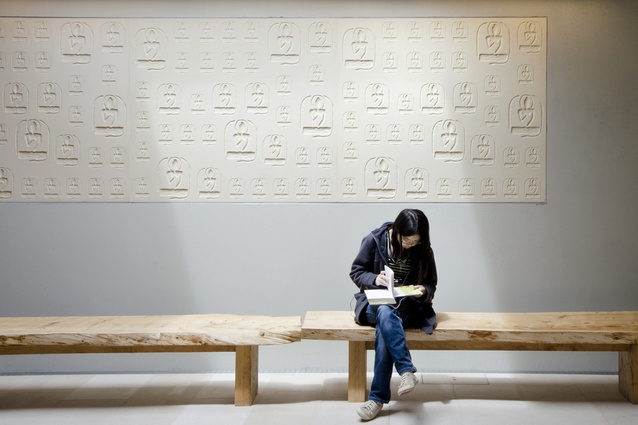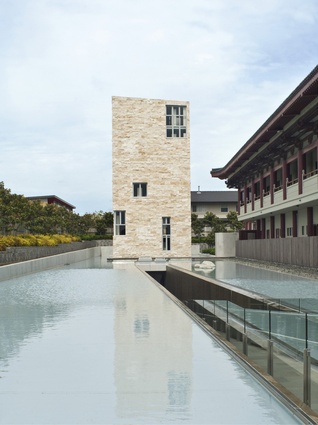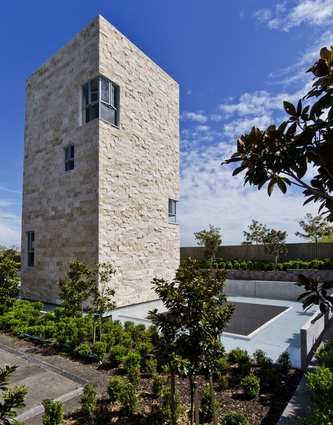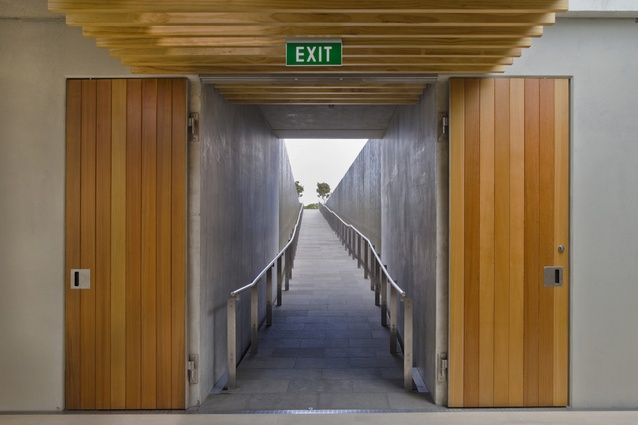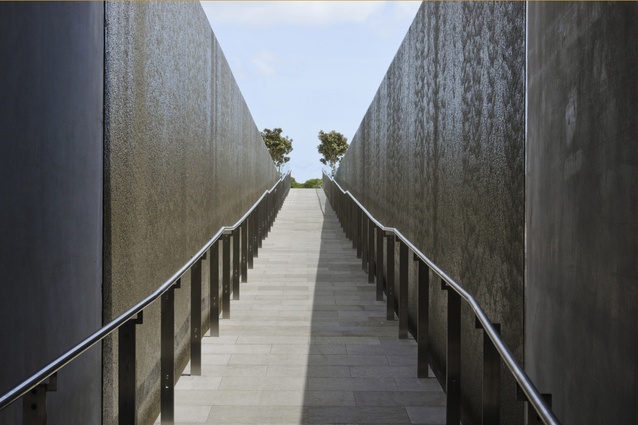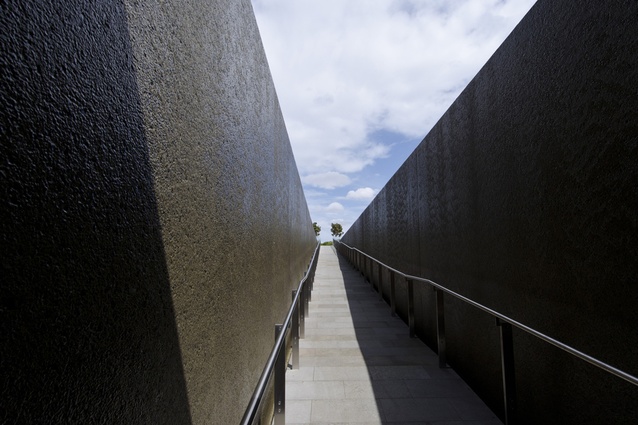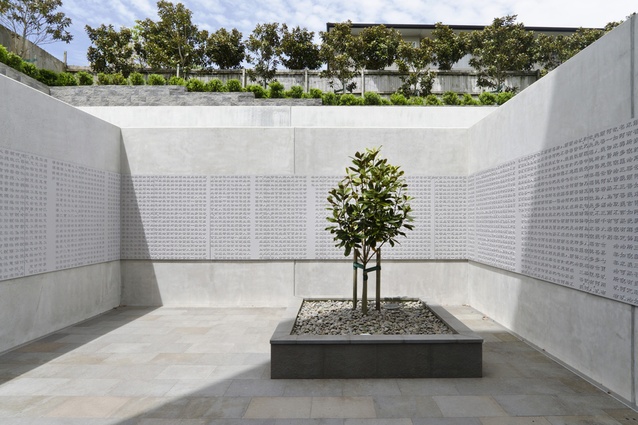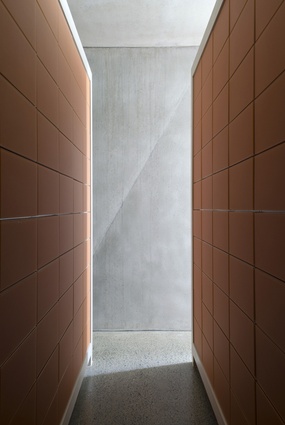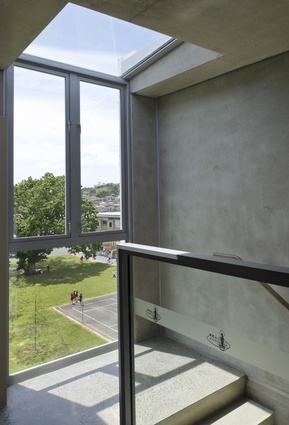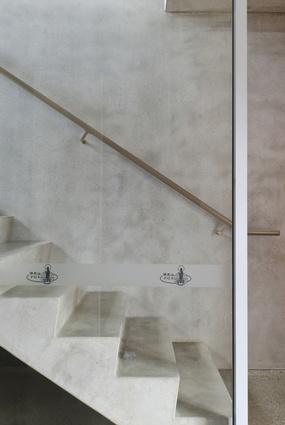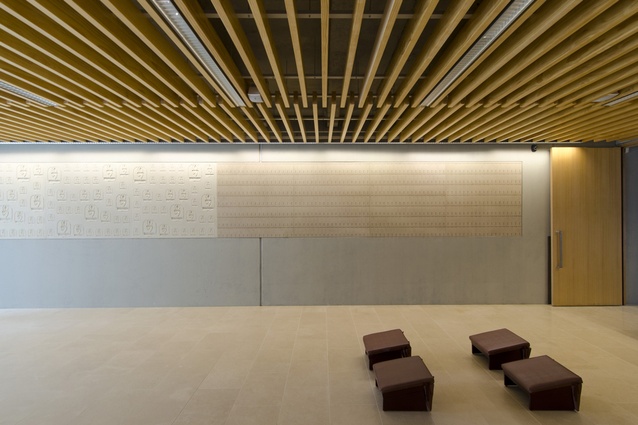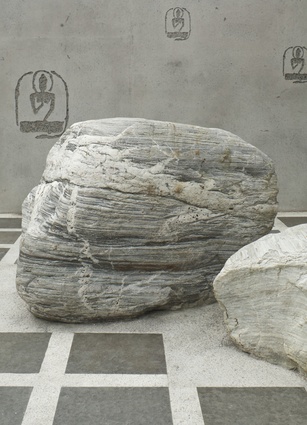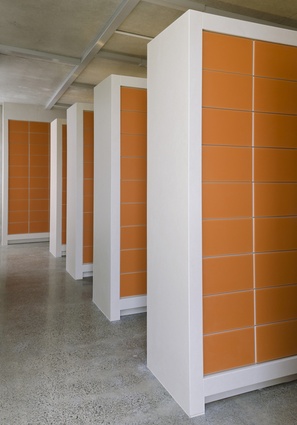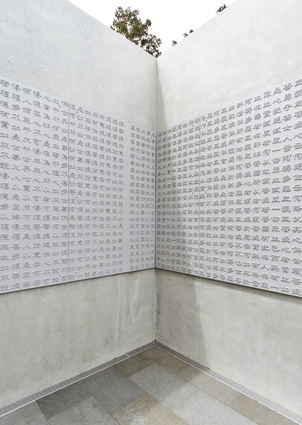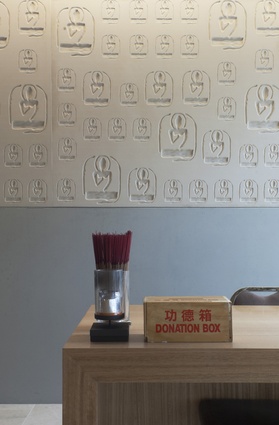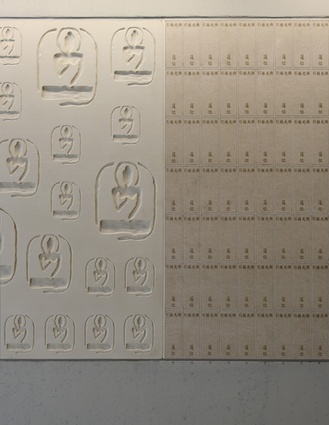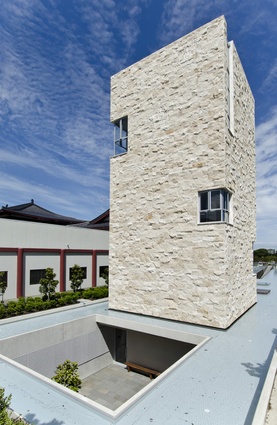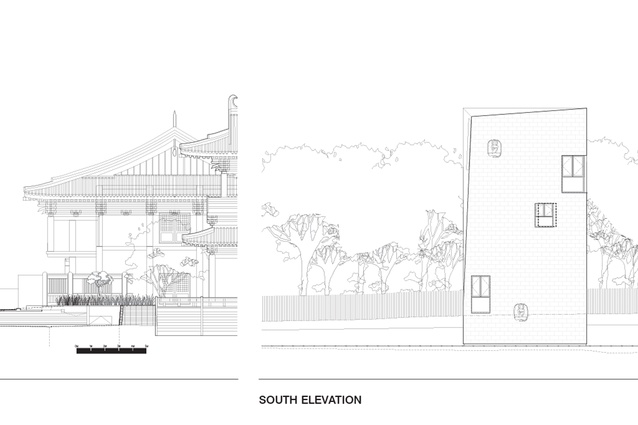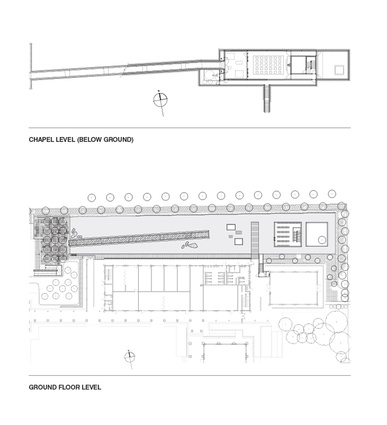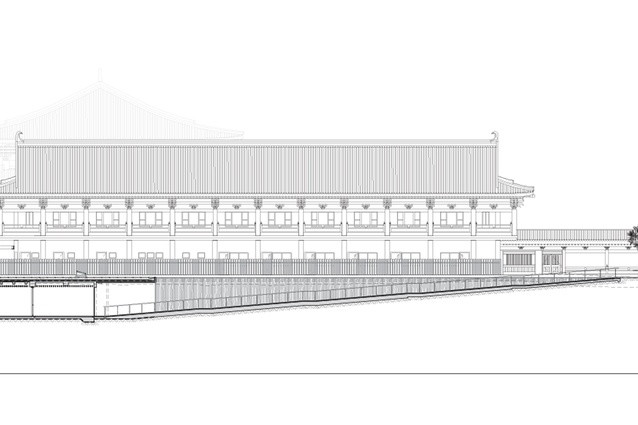Fo Guang Shan Pagoda
In the last year, I have returned to Auckland after an extended period of living in London. I have been intrigued to see how things have changed and the growing Asian influence within the city is most noticeable. Indeed, new suburbs, such as Flat Bush, have grown in this time and the siting of the Fo Guang Shan (North Island) Temple, completed in 2007, within this area is an example of how the growing Asian community is impacting on Auckland’s urban fabric. The temple is an important social landmark for Auckland’s wider Buddhist communities and the opening of a new pagoda on the site was celebrated late last year.
Designed by Warren and Mahoney, who had already worked closely with the Fo Guang Shan Buddhists on a temple complex in Christchurch, the new pagoda adds capacity to the existing columbarium and provides a new focus for memorial ceremonies.
The pagoda holds a significant place within Buddhist architecture and thinking. From the Sanskrit stupa through to modern interpretations, a symbolic link has often been maintained between life, death, the earth and the natural world. The housing of cremated remains in this new tower will allow Buddhists and members of the wider Asian community to fulfil the principles of filial piety, honouring their departed family members and ancestors by visiting the pagoda’s purpose-built chapel.
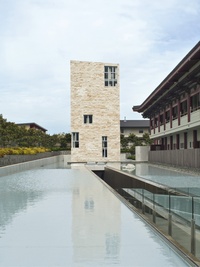
Built on a section of land on the northern perimeter of the temple’s grounds, the pagoda backs onto residential streets and a school. Project architect Simon Dodd explained that, from the start, the pagoda and surrounding pool were thought of more as a landscape element rather than as an additional built structure that had to conform to the symmetry of the existing temple.
For Dodd, the key approach to the tower was that it represents a single block of stone. Conceptually, the thinking “tried to deconstruct the sense of a building to convey a single object”. A variety of design measures was introduced to further enhance this perception including: an arbitrary arrangement of the windows offset from any relationship to the internal organisation of the tower; a setback in the front face of the tower giving the appearance of roughly cut piece of stone; and a ‘shadow’ line channel running around the base of the tower.
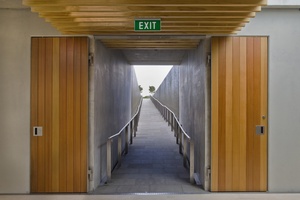
The play-off between stone and water is the dominant impression one has when approaching the pagoda. This experience is taken further and is central to the bodily entry into the chapel at subterranean level. Bush-hammered concrete walls form vertical waterfalls on both sides of a ramp that cuts through the pool, culminating in a bright, skylighted ante-room. The path down the ramp is one of the key experiences of the pagoda and it is as much an auditory experience as it is visual and embodied.
The temple’s Abbess Manshin describes this experience as one that allows for the symbolic ‘washing away of grief’ before entering the chapel. Dodd similarly described this as a process where outside worldly noises are drowned out by a gradually increasing soundscape of falling water. Only after passing through this does the visitor emerge into the tranquility of the chapel.
The tone set by the transience of the running water against Turkish marble is carried through into the rest of the project. Inside the chapel, materials are simple but the finish is refined. A graphic image of Buddha is etched into the exterior marble and is carried through onto wall panels in the chapel and a repeated pattern of wall plaques creates a continuity between the chapel and the rear open courtyard. The project was not completed without compromises; for instance, the height of the tower had to be reduced after objections from the school and the enclosure of the pool by a glass balustrade for safety reasons jarred with the openness of the original design. However, despite these compromises, actively harnessing contrasts between materials and finishes has been an effective method to work within the Temple’s modest budget and desire for dignity and simplicity.
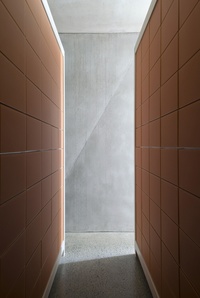
The chapel and courtyard are the only areas open to visitors. The upper levels of the pagoda, where cremated remains will be kept, will be accessible only to the monks or nuns of the temple. The layout of this area is suitably austere, with exposed concrete and a single rear staircase. The only time people will see this area is when they choose the final resting place for their relative’s remains.
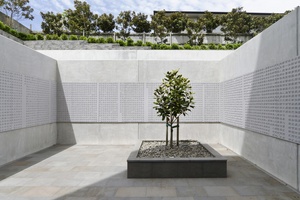
The rear courtyard offers a meditative space for both relatives of the deceased and the general public. Set below the water level of the pool, it has a single tree as a focal point and the text from the Diamond Sutra runs around the walls on a series of relief panels.
Simon Dodd described the courtyard as an ‘abstract space’ and the experience of being below that water level certainly adds to this notion. One of the key teachings from the Diamond Sutra is the illusory nature of the material world and is echoed by Jack Kerouac’s statement from The Dharma Bums that, “It’s only through form that we can realize emptiness”. Whether or not you agree with this, visiting the pagoda does allow one to slow down and to be open to an unexpected aural architectural experience.

